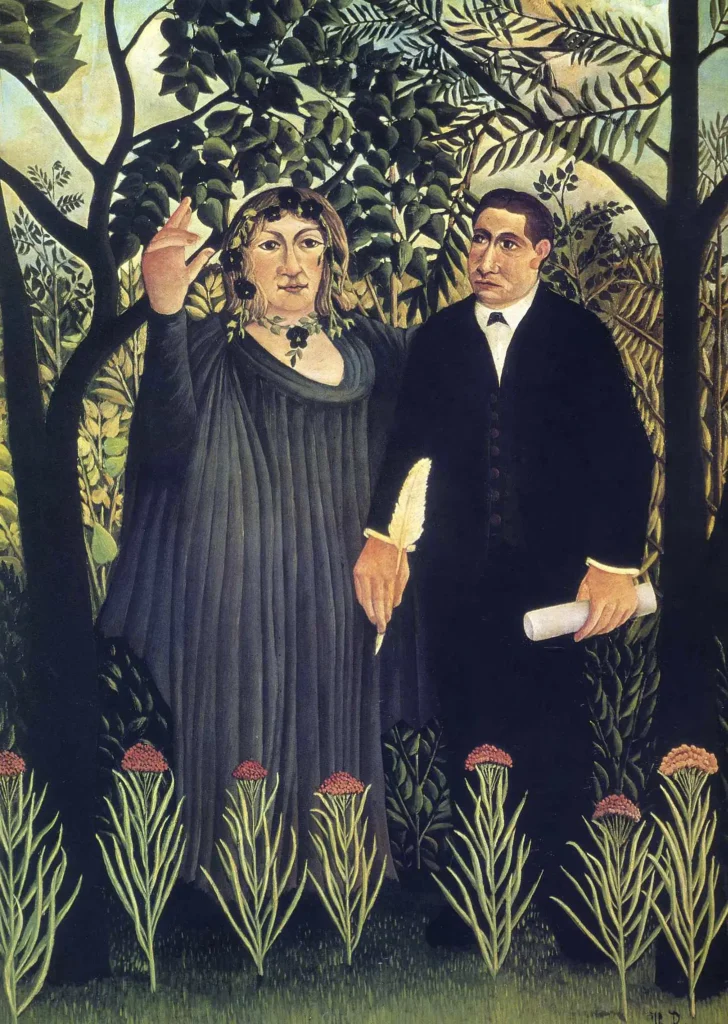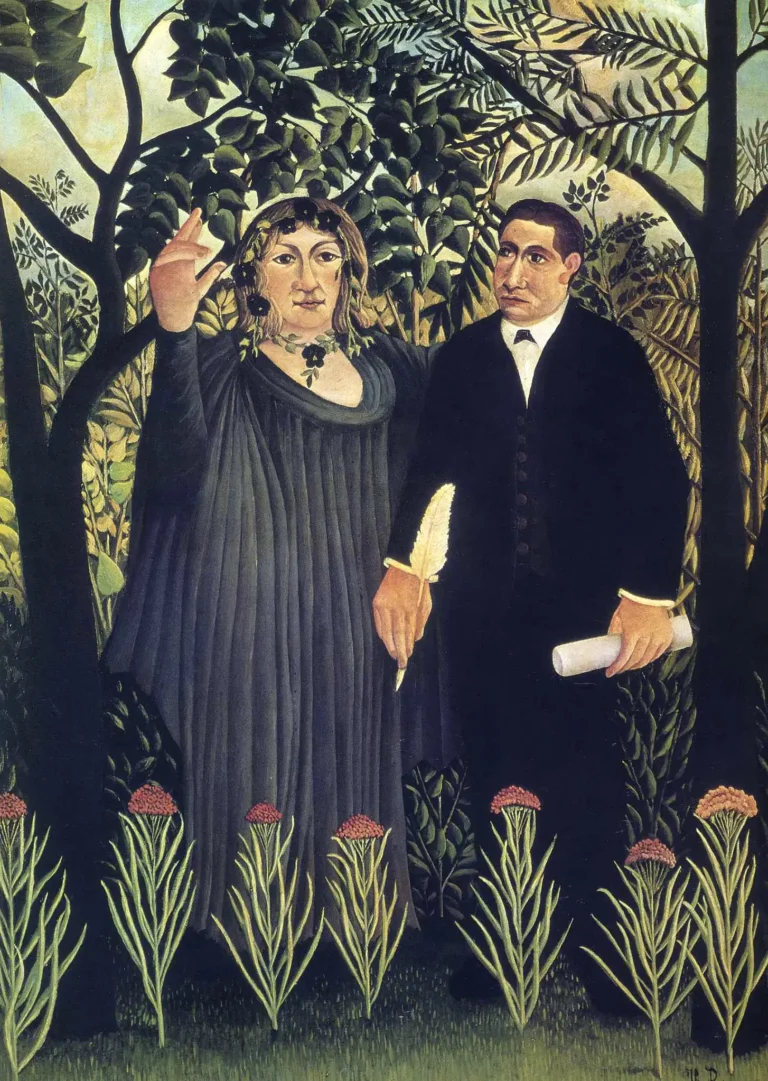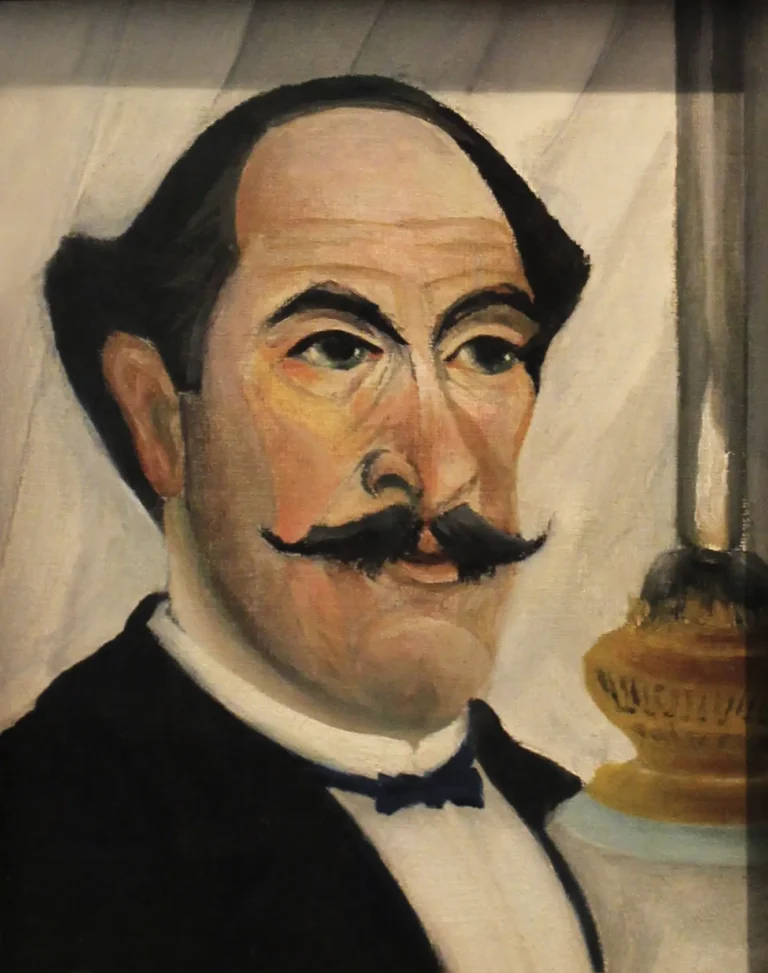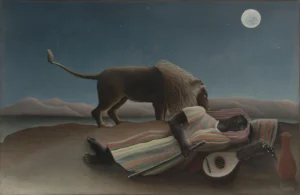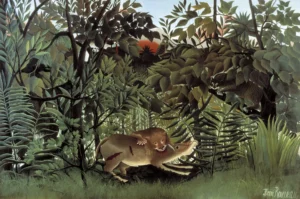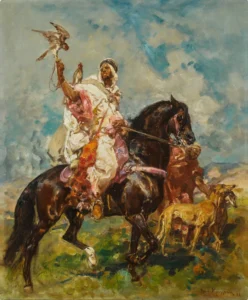The Muse Inspiring the Poet (1909)
Henri Rousseau's The Muse Inspiring the Poet represents a double portrait of the avant-garde poet Guillaume Apollinaire alongside his mistress and fellow artist Marie Laurencin. Created in 1909, the painting beautifully intertwines themes of love and creativity. The first version, characterized by wallflowers, sparked controversy due to its symbolism of death, while the second version softens the figures, creating a more stylized salon atmosphere, showcasing Rousseau’s ambition to marry his unique artistic voice with traditional techniques.
Year 1909
About the Artwork
The creation of The Muse Inspiring the Poet is rooted in the vibrant Parisian art scene of the early 20th century. Henri Rousseau, often associated with naive art, was deeply entrenched in the avant-garde movement, which included his friendships with pivotal figures like Guillaume Apollinaire and the artist Marie Laurencin. The first version of this portrait, rich with symbolism of wallflowers that imply oblivion, stirred controversy among critics, while Rousseau's second version sought to appease Apollinaire's requests for a more sophisticated composition. Additionally, the provenance of the painting is noteworthy; the Kunstmuseum Basel's version was under contention for restitution, highlighting the broader historical narratives of art ownership and legacy.
Did You Know
Liked what you see? Add it to your collection.
Enjoyed reading? Share it.
... continued
The Muse Inspiring the Poet
is a painting created by the French artist Henri Rousseau in 1909, characterized by its unique blend of naive and primitivist styles.
Subjects
The painting is a double portrait of Guillaume Apollinaire, a French poet, and his mistress, Marie Laurencin, who was also an artist. Apollinaire was a significant figure in the Parisian avant-garde, and Laurencin was known for her own artistic contributions and her slender, elegant appearance.
Versions
Rousseau created two versions of this work. The first version, which is now in the Kunstmuseum Basel, features Apollinaire and Laurencin in a landscape with wallflowers at their feet. The wallflowers were mistakenly included instead of the requested Turkish carnations, which symbolized poets. This mistake led to some controversy, as wallflowers symbolize death and oblivion.
The second version, now in the Pushkin Museum in Moscow, was painted after Apollinaire requested a new portrait. This version is more schematized and attempts to create a more salon-like painting, with more averaged and simplified figures and landscape.
Style and Technique
The painting is executed in oil on canvas and measures 146×97 cm. Rousseau's style in this work reflects his admiration for academic painting, despite being associated with the naive and primitivist movements. He sought to balance his unique style with more traditional elements, which is evident in the comparison between the two versions of the painting.
Provenance
The version in the Kunstmuseum Basel was purchased by the museum in 1940 through the Swiss art dealer Christoph Bernoulli. However, in 2021, the heirs of Charlotte von Wesdehlen requested the restitution of the work, citing its previous ownership by the Jewish art collector Paul von Mendelssohn-Bartholdy.
Significance
The Muse Inspiring the Poet is significant not only for its artistic value but also for its historical context and the relationships it depicts within the early 20th-century Parisian art and literary circles. It highlights Rousseau's unique approach to portraiture and his interactions with influential figures of his time.




